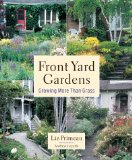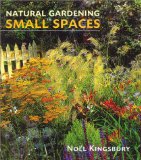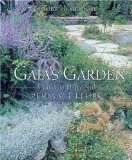| Find inspiring photos and examples of naturally landscaped urban and suburban gardens in these 3 gorgeous, easy-to-read books! |
| ABOUT US START IDEAS DO LESS USEFUL PLANTS PROJECTS VIEWS RESOURCES TOPICS |
|
|
|||
|
If you own a typical urban or suburban lot and want to create an ecologically sound landscape, there is more good information available than ever. Here are three recently published, top-notch books that will blow you away. Think your front garden needs to remain a lawn in order to please the neighbors? Wonder what you could substitute for clipped grass in such a small space? Take a look at Liz Primeau's Front Yard Gardens: Growing More Than Grass, which profiles more than 25 striking (and mainly lawnless) front gardens in the US and Canada, starting with her own. Several pages are devoted to each garden. Splendid color photos by Andrew Leyerle bring you into the gardens, where you can feel their unique personalities. Styles vary widely—from austere to ornate, from woodsy mystery to sunny exuberance. Many of the gardens feature stone, wood, and water elements as well as plants. The cheery, conversational text describes the background of each garden, quoting the gardeners frequently so that their personalities shine through as clearly as those of their gardens. Supplemented with photos from tens of additional gardens to illustrate particular design techniques, this is a beautiful, entertaining, and ultimately inspiring book (even when read the third time). You can have a naturalistic garden, even a lawnless garden, even in the front yard, and regardless of your yard's size. Now that Primeau's book has your mind churning with possibilities, pick up Noel Kingsbury's Natural Gardening in Small Spaces. You'll get a primer on how to design a garden that not only looks like a natural community but functions like one too, sustaining itself with little care on your part, in an area of any size. Kingsbury clearly conveys basic concepts of ecology as he shows you how to make a more natural-looking and self-sustaining garden. He explains why an ecologically sound landscape is friendly to wildlife, minimizes chemical and water supplements, and favors native and locally adapted plants. Much of the book addresses different site conditions and the particular natural habitats and types of plants that work well in those conditions. Kingsbury advocates using natural areas as models, and he explores the major types of natural landscape from a design perspective, with easy-to-grasp principles that help you to think about your garden's structure and inhabitants. Color photos display communities of plants as well as closeups. Kingsbury excels at presenting unique design concepts (as he did in his earlier book, The New Perennial Garden). His thirty-page chapter titled "Designing for Nature" introduces useful, ecologically sound ideas that can focus a design, such as using transitional spaces to increase diversity, fostering diverse species to control plant predator populations, and conveying a 'sense of place' with key plants. The book's short sections, clear language, and general visual appeal make it easy for traditional gardeners to learn more about naturalistic design, and the more ecologically savvy reader may also apreciate the way Kingsbury frames these concepts in lay gardeners' terms. Now that you know something of how nature works, turn to Toby Hemenway's Gaia's Garden: A Guide to Home-Scale Permaculture. This book has the power to change your whole concept of your relationship with your land. Hemenway will show you how to integrate a vegetable garden, fruit trees, herbs, and other useful plants into your naturalistic landscape. Learn the specific ways that plants help each other, and use that knowledge to assemble a low-maintenance community of plants that will build soil, stabilize insect populations, and increase the health of your landscape in many other ways, in addition to supplying some of your family's food! Hemenway will inspire you to use what you've learned about how nature works to build a self-sustaining and at least partly edible landscape. Feel the pride and satisfaction of living off your land, whether it's an acreage or a balcony. |
 Front Yard Gardens  Natural Gardening in Small Spaces  Gaia's Garden |
||
|
Thanks for visiting http://www.LessLawn.com! All site contents © 2001-2013 Evelyn J. Hadden, except where noted. All rights reserved. |